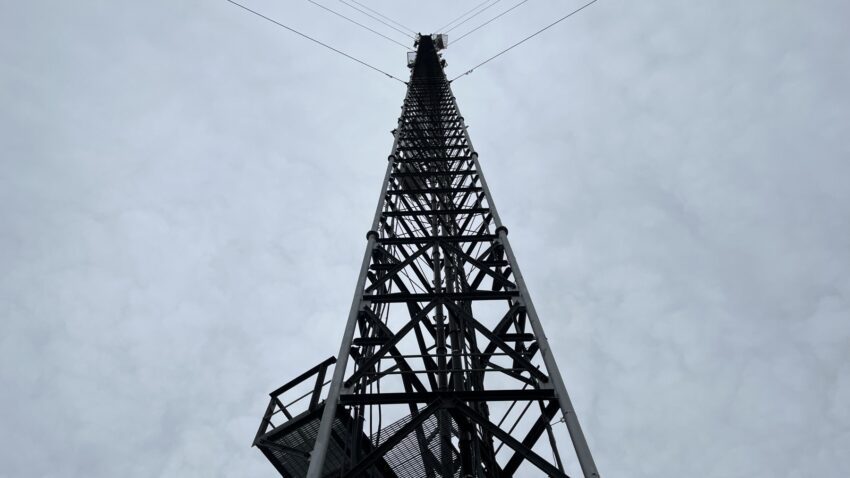In response to coverage of an FCC order regarding a Minneapolis station on Rochester cable TV, a reader writes:
What’s the list of weirdest geographic quirks with respect to media markets? It always seemed odd that Rochester had stations despite being less than a 90 minute drive from Minneapolis. That’s probably closer in terms of drive time than Mason City, a small town that co-anchors the same market. Are there other oddities with markets crammed close to large markets?
The existence of TV stations in Rochester isn’t that odd when you consider that Mankato and Eau Claire, also about 90-minute drives from the Twin Cities, have their own TV stations as well.
The cities have proven themselves large enough to support TV stations despite having to compete with the Minneapolis stations for viewers in part of their markets. In all three cases, the smaller city’s original TV station transmits from south of the city (farther from Minneapolis) and reaches a market that extends to the south, with the market’s northern or western boundary only a few miles away from the city of license.
As I mentioned in a post about how TV markets are assigned, decisions by broadcasters in the early days of TV played a role in defining TV markets that exist to this day. The Rochester station put its transmitter partway to Mason City, the Mason City station put is transmitter partway to Rochester, Austin was in the middle, and the rest is TV history. (The Mankato station came along later.)
Minnesota isn’t the only Upper Midwest state with such a situation. In Nebraska, Lincoln is less than an hour’s drive away from Omaha but is a separate TV market. This wasn’t always the case.
Originally, Lincoln was considered too close to Omaha for the first Lincoln stations to get a major network affiliation. Eventually, the owner of one of the Lincoln stations bought out its competitor and moved its transmitter west of Lincoln, far enough away from Omaha to secure a CBS affiliation. The other channel was donated to the university.
Iowa is home to a few other cases of what our questioner might describe as “geographic quirks” when it comes to the spacing of TV stations.
Sioux Falls and Sioux City are less than a 90-minute drive apart. In the analog era, two stations from each city were fairly easy to receive in the other city, and Sioux Falls cable carried the Sioux City stations. But they remained separate markets and viewership split as more stations signed on and cable/satellite providers only carried in-market stations.
Then, there’s eastern Iowa, with its seemingly complicated pairings of cities. The Quad Cities of Davenport, Bettendorf, Rock Island, and Moline are one market while Cedar Rapids, Iowa City, Dubuque, and Waterloo are another. Cedar Rapids is less than 90 minutes from the Quad Cities and Iowa City is only an hour away from the QCA.
As I mentioned in that post earlier this year, the Quad Cities already had two stations by the time the first Cedar Rapids station signed on. Instead, Waterloo and Cedar Rapids stations decided to compete with each other. Dubuque was actually considered its own market at one time with ABC affiliate KDUB/40 as its only station, but it was eventually folded into the Cedar Rapids-Waterloo market.
Then there’s the “geographic quirk” of what didn’t happen. Look again at the map of Minnesota and the ring of cities around Minneapolis. Mankato and Rochester have their own major network affiliates, but St. Cloud doesn’t.
How’d that happen? Channel 7 was originally allotted to St. Cloud, but it was not built there. Instead, investors moved the allotment to Alexandria and signed on a station there. Later, they moved the channel 12 allotment from Brainerd to Walker to add a satellite station.
How would the landscape have looked if competing stations had been built in St. Cloud and Brainerd on channels 7 and 12, forming their own central Minnesota TV market? Would they have survived where the Alexandria market failed? (Alexandria was folded into Minneapolis in the late 1980s.) Would the St. Cloud channel 7 have tried to move closer to Minneapolis?
There’s no way to know, because it didn’t happen.
It’s also interesting to consider how the TV map may have ended up differently if stations had signed on in a different order and/or chosen to put their transmitters in different spots. We might have had the Quad Cities-Cedar Rapids market, the Waterloo-Dubuque market, the Mason City-Fort Dodge market, and the Rochester-Austin-Mankato market. But that’s not what happened.
While it may seem odd to us in the Midwest, TV markets are actually much more tightly-packed in the eastern U.S. For them, our huge markets (and the even larger markets in the West) would seem unusual.
How close is too close for a separate TV market? There’s no official answer, of course, but one might consider the case of the former WAKR-TV in Akron, Ohio, which tried to provide a local voice to the city of nearly 200,000 people but didn’t survive as a traditional network affiliate, being only 30 miles away from larger affiliates in Cleveland.
Small cities that did manage to get their own TV voice are lucky to have them.
Do you have a question about broadcasting? Email jonellis@northpine.com and I’ll do my best to find an answer!
READ: More Ask NorthPine questions and answers
Disclosure: Jon Ellis is an employee of Gray Media Group. The statements and views expressed in this posting are his own and do not reflect those of Gray Media Group.

